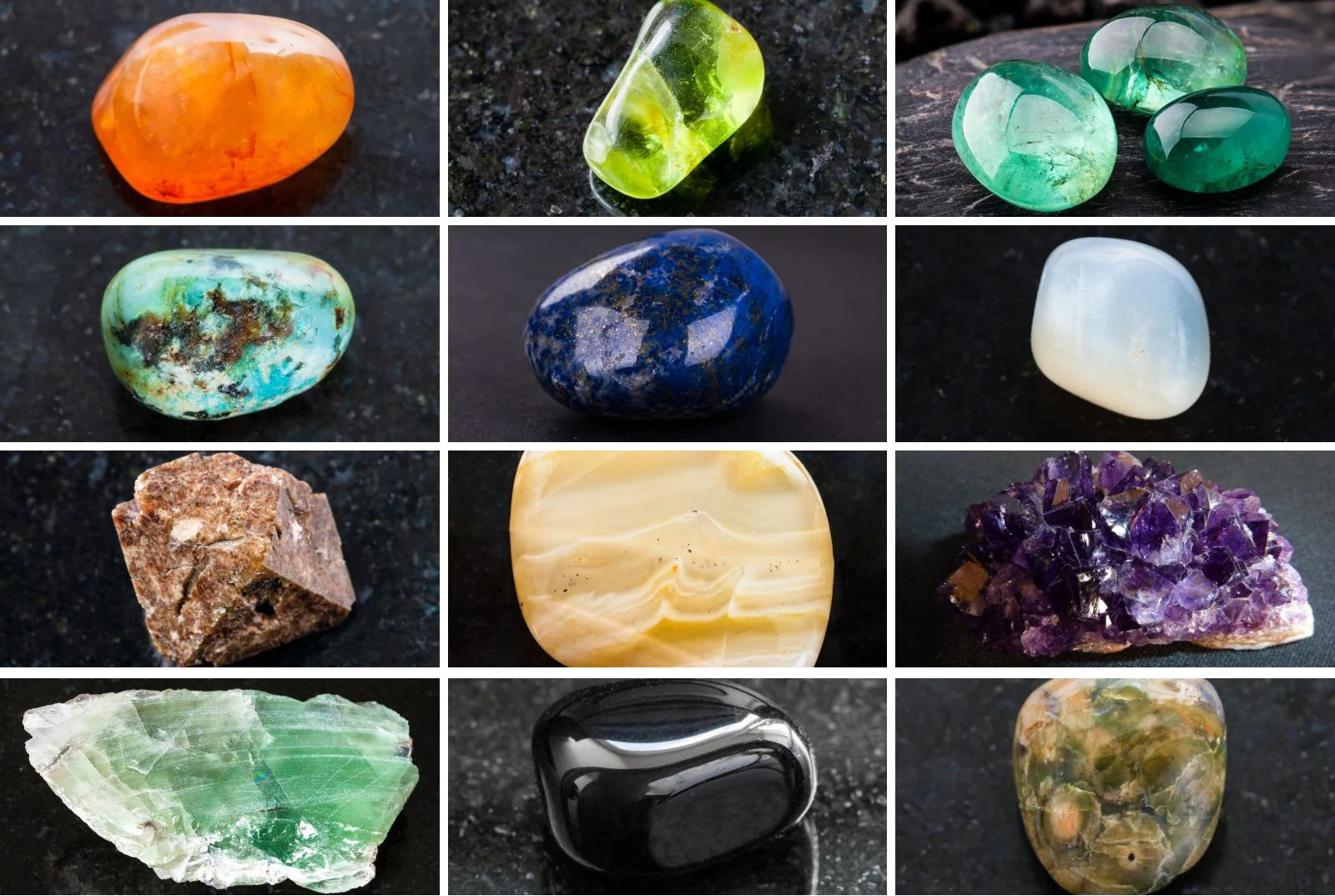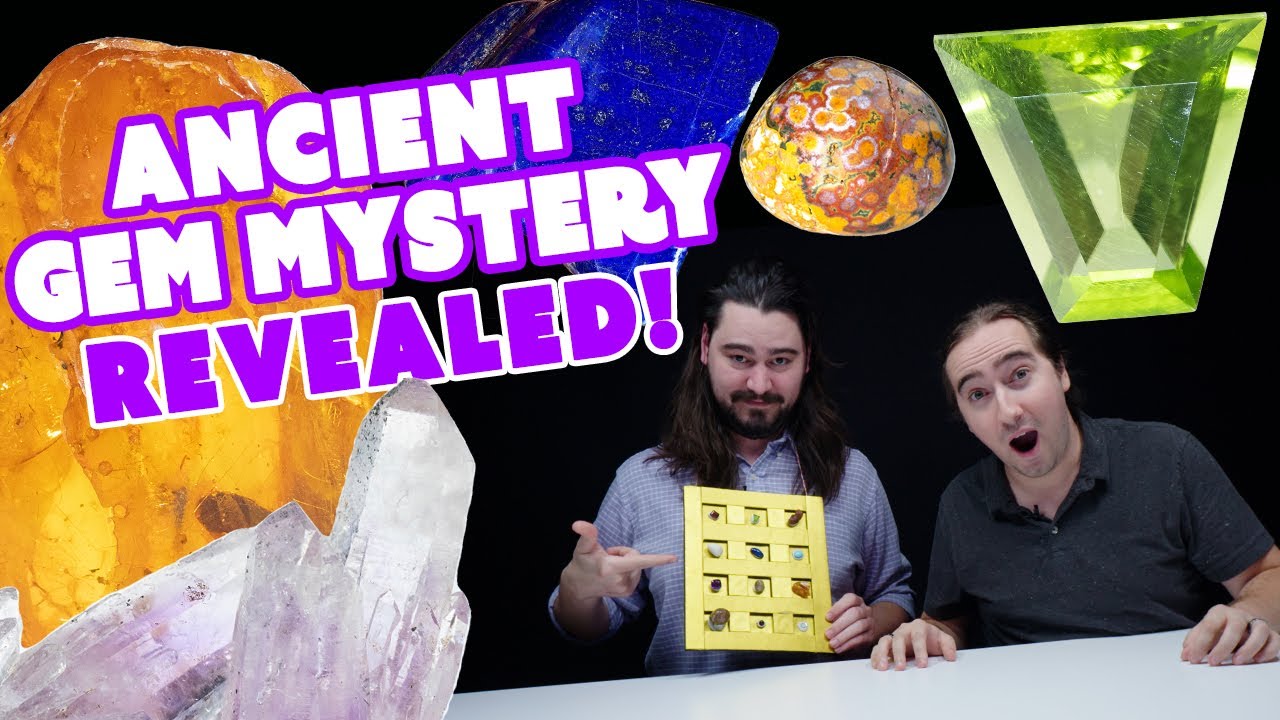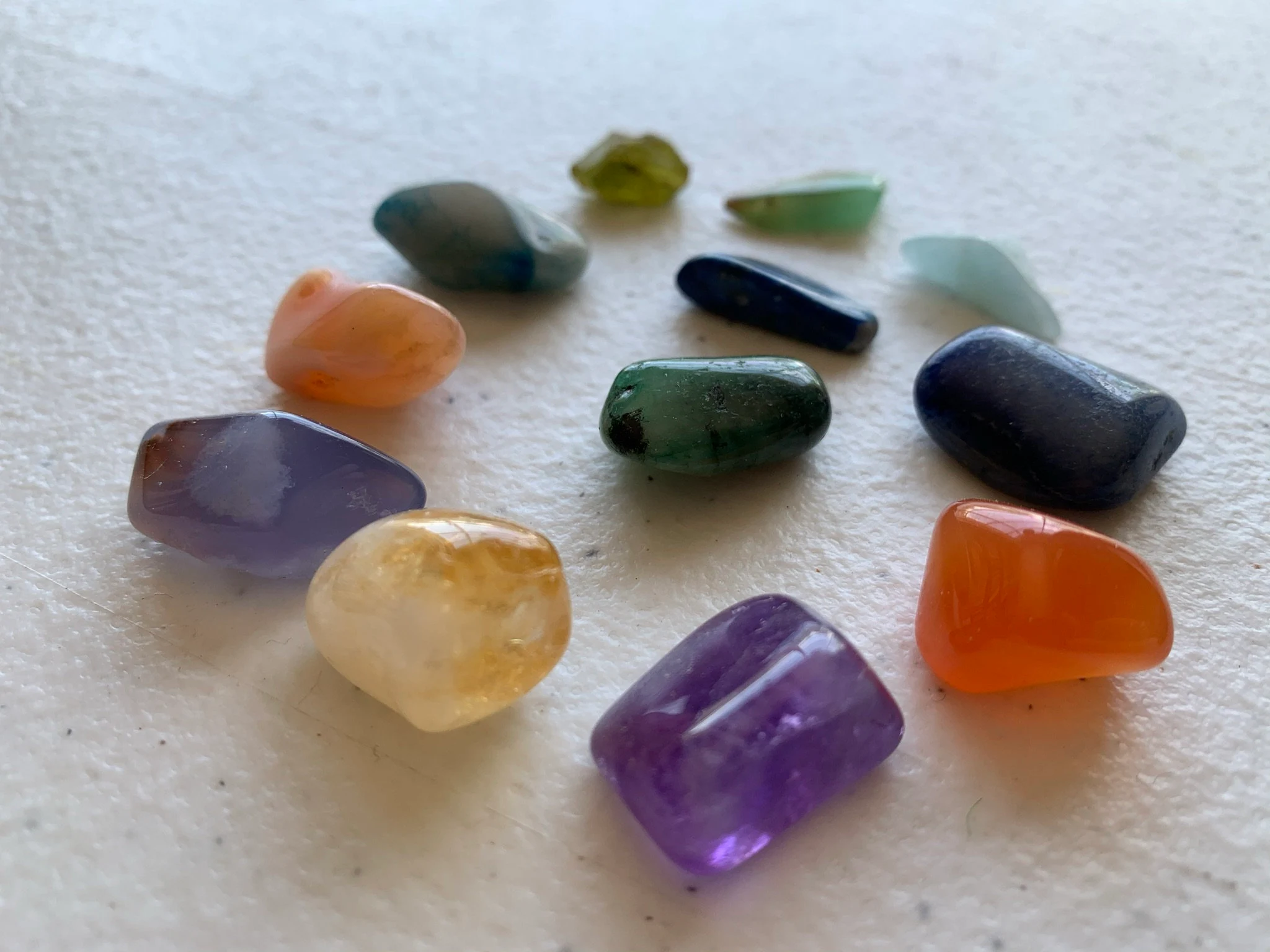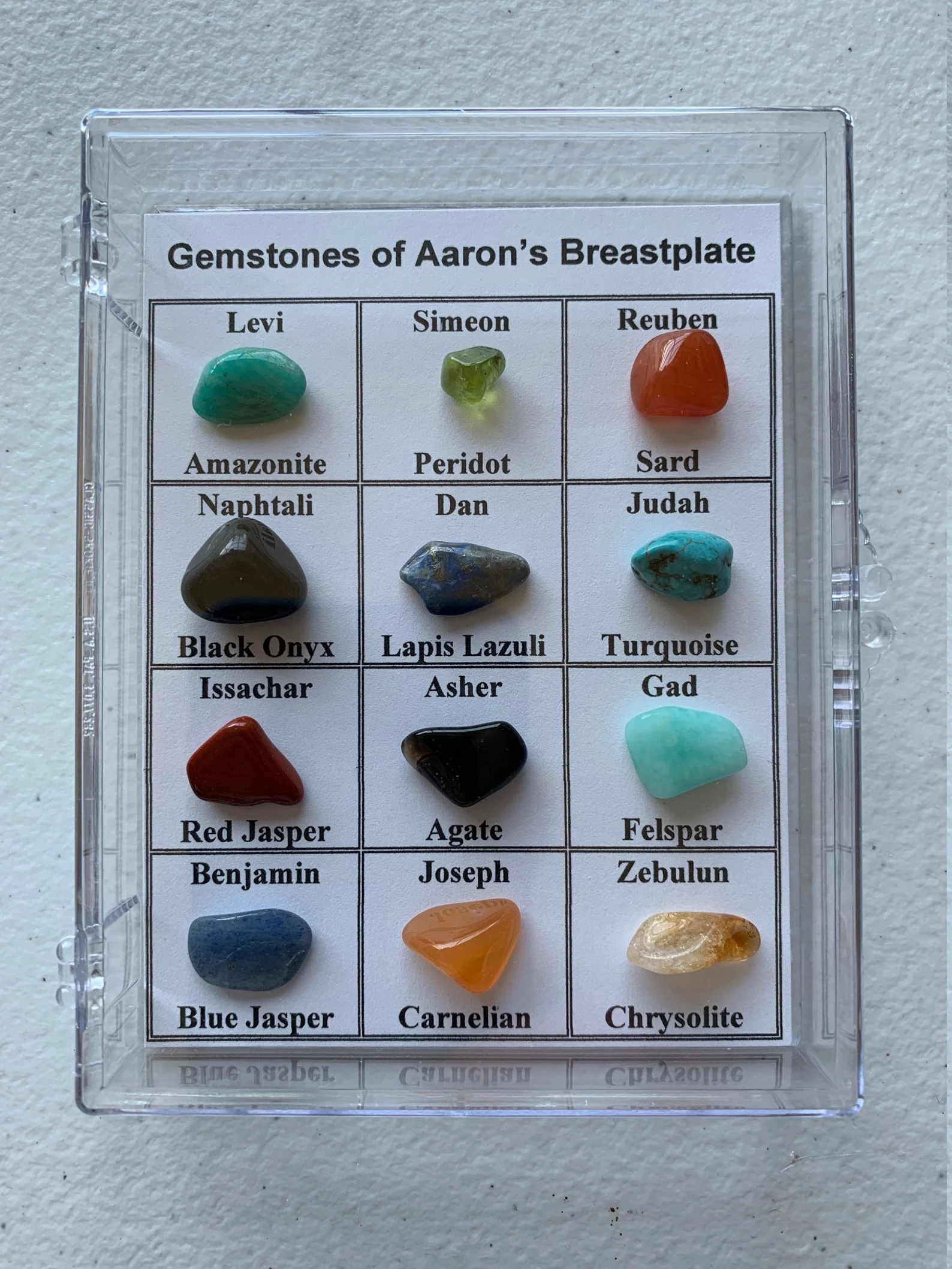
Gemstoneshave captivated humanity for millennia, representing beauty, rarity, and spiritual significance. In the Bible, gemstonesare far more than decorative; they symbolize divine connection, eternal promises, and spiritual truths. From the sacred Breastplate of Aaron to the New Jerusalem’s foundation stones, these gems are steeped in history and divine symbolism.
Yet, identifying biblical gemstones is a challenge. Ancient names described stones by their appearance or origin, not their mineral composition. Over centuries, translations from Hebrew to Greek, Latin, and modern languages added complexity.
1. Historical And Spiritual Context Of Gemstones In The Bible
1. Biblical Gemstones In Trade And Worship
The Israelites acquired gemstones through trade with ancient civilizations. Caravans from Babylonia, Egypt, and Persia brought precious stones like carnelian, turquoise, and lapis lazuli.
During the Exodus, the Bible recounts the Israelites carrying gemstones gifted by the Egyptians (Exodus 12:35-36). King Solomon’s fleet also brought exotic gems from Ophir (1 Kings 10:11).
Gemstones were central to worship, symbolizing wealth, divine favor, and spiritual truth. They adorned sacred items like Aaron’s Breastplate and symbolized God’s covenant with His people.
2. The Mystical "Stones Of Fire"
Ezekiel refers to “every precious stone” adorning the King of Tyre (Ezekiel 28:13-16), describing them as "Stones of Fire." These stones symbolize divine power and angelic presence. Their brilliance and rarity reflect the spiritual perfection of God’s creation.
See Also: How To Make Jewelry From Scratch?
3. Gemstones As Spiritual Metaphors
Throughout the Bible, gemstones are used metaphorically:
- Wisdom: Proverbs 3:15 compares wisdom to rubies, emphasizing its value.
- Strength: The diamond’s hardness symbolizes resilience and divine truth (Jeremiah 17:1).
- Eternal Beauty: Gems mirror God’s enduring promises and glory.
2. Aaron’s Breastplate: The Gemstones Of Judgment
1. Design And Purpose
Aaron’s Breastplate, also known as the Breastplate of Judgment, was an essential garment for the high priest. Detailed in Exodus 28:15-30, it featured 12 gemstones set in gold, each inscribed with the name of one of Israel’s tribes. The breastplate symbolized divine communication and guidance, connecting God with His people.
Josephus, the Jewish historian, described the breastplate as representing the cosmos, linking its stones to the 12 zodiac signs and months of the year. This celestial imagery emphasized the universality of God’s covenant.
2. Row-by-Row Breakdown Of The Gemstones
The breastplate’s 12 gemstones were arranged in four rows. Modern interpretations, informed by Harrell’s research, align these stones with their likely equivalents:
First Row:
- Sardius (Carnelian): Symbolizes courage and protection.
- Topaz(Peridot): Represents spiritual clarity.
- Carbuncle (Garnet): Associated with strength and passion.
Second Row:
- Emerald: Reflects renewal and eternal life.
- Sapphire(Lapis Lazuli): Represents divine wisdom.
- Diamond (possibly Quartz): Signifies steadfastness.
Third Row:
- Ligure (Amberor Hyacinth): Associated with enlightenment.
- Agate: Symbolizes grounding and stability.
- Amethyst: Known for sobriety and inner peace.
YouTube Video

Unboxing the Bible’s Mystery Gemstones – Onyx, Lapis & More!
Fourth Row:
- Beryl: Represents happiness and youth.
- Onyx: Signifies unity and marital harmony.
- Jasper: Reflects divine glory.
3. Translation Challenges
The Hebrew names for these gemstones have been interpreted inconsistently. For instance:
- Sappheirosin Greek refers to lapis lazuli, not modern sapphire.
- Topazosis peridot, not topaz.
Harrell’s geological research clarifies these identifications, aligning ancient descriptions with modern gemology.
Related: What Does The Bible Say About Jewelry?
3. The Treasures Of The King Of Tyre
1. Ezekiel’s Vision Of Tyre’s Wealth
Ezekiel 28:13 describes Tyre’s king adorned with gemstonessuch as beryl, carbuncle, and sapphire. As a hub of ancient trade, Tyre amassed treasures through its connections with Egypt, Mesopotamia, and Arabia. The gemstones symbolize wealth, pride, and divine judgment.
2. Connection To Aaron’s Breastplate
The gemstones listed in Ezekiel closely parallel those of Aaron’s Breastplate, underscoring their shared symbolism of divine favor and spiritual accountability.
4. The Gemstones Of The New Jerusalem
1. Revelation’s Description
Revelation 21:18-21 describes the foundation stones of the New Jerusalem as adorned with 12 gemstones, including Jasper, Sapphire, Chalcedony, and Amethyst. These stones symbolize the eternal beauty and perfection of God’s restored kingdom.
2. Symbolism Of The 12 Stones
Many scholars, including Bishop Andreas of Caesurae, associate the 12 foundation stones with the apostles. This connection highlights their role as spiritual foundations of the Church and symbols of faith and unity.
3. Alignment With Aaron’s Breastplate
The gemstones of Revelation echo those of Aaron’s Breastplate, reinforcing the continuity of God’s covenant from the Old Testament to the New Testament.
5. Identifying Biblical Gemstones: Challenges And Insights
1. Ancient Naming Conventions
Biblical gemstones were named based on color, origin, or trade routes. For instance:
- Chalcedonyderives from the city of Chalcedon.
- Sappheirosreferred to the starry-blue lapis lazuli.
2. Translation Complexities
Linguistic shifts from Hebrew to Greek (Septuagint) and Latin (Vulgate) introduced inconsistencies. Modern science has clarified some identifications, but others remain uncertain.
3. Harrell’s Contributions
Dr. James Harrell’s geological research aligns biblical gemstone descriptions with archaeological evidence, resolving long-standing ambiguities.
6. Gemstones In Modern Spirituality And Culture
1. Religious Jewelry And Practices
Biblical gemstones inspire faith-based jewelry, symbolizing spiritual truths and divine connection.
2. Ethical Sourcing
Modern ethical practices align with biblical principles of stewardship. Buyers are encouraged to support responsibly sourced gemstones.
3. Gemstone Myths And Science
While ancient beliefs attributed mystical powers to gemstones (e.g., amethyst preventing drunkenness), modern appreciation often focuses on their beauty and symbolism.
FAQs About Biblical Gemstones
Why Are Gemstone Names Inconsistent?
Ancient names often described color or origin rather than composition. Translations added further discrepancies.
What Do The Gemstones Of Revelation Represent?
They symbolize the apostles and God’s eternal covenant with humanity.
Were Biblical Gemstones Faceted?
No, ancient gemstones were polished into cabochons or left unpolished.
Conclusion
The sacred gemstones of the Bible remain timeless symbols of divine beauty and spiritual truth. Their legacy, from Aaron’s Breastplate to the New Jerusalem, continues to inspire faith and reflection, bridging the ancient and modern worlds.




